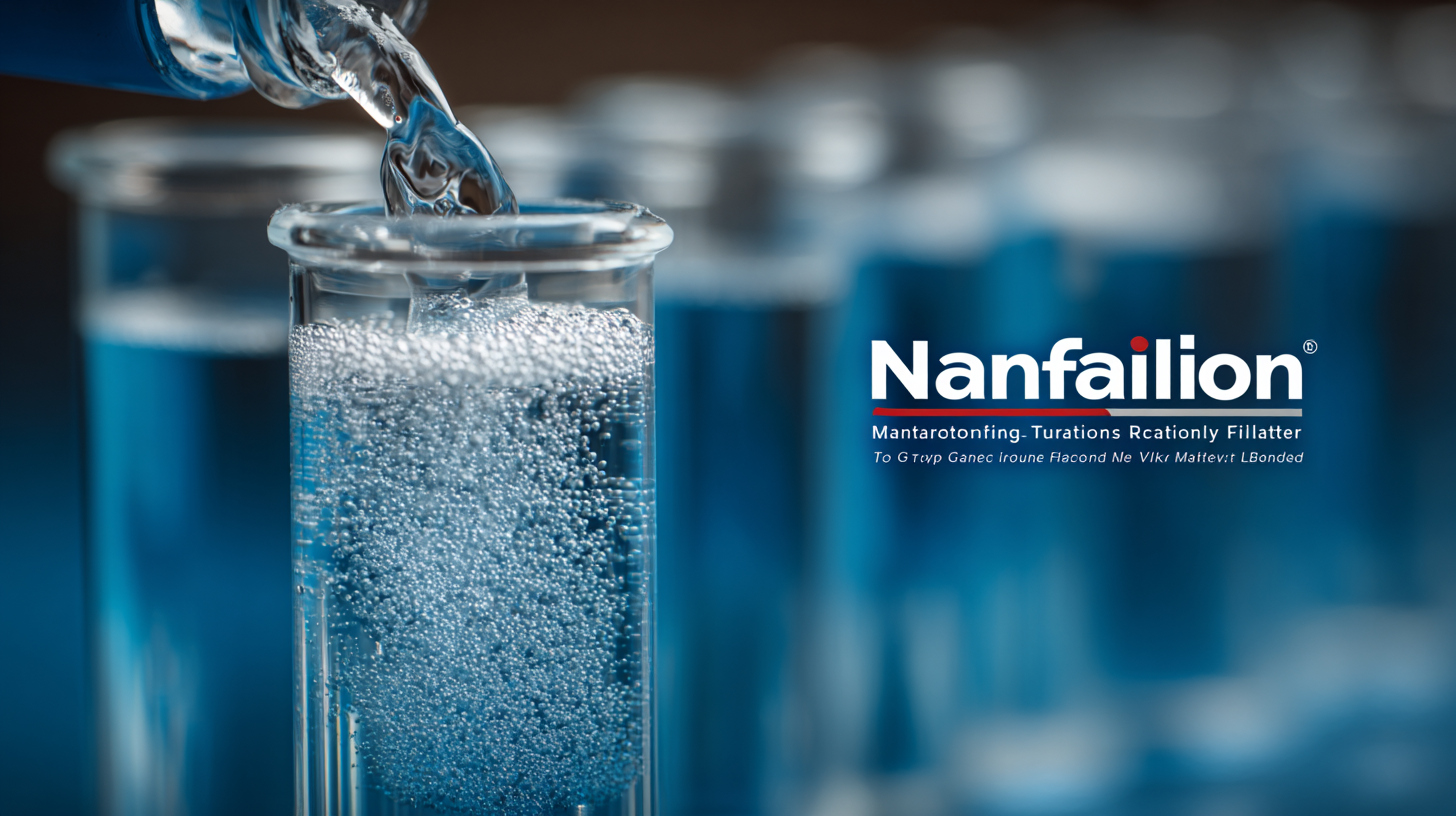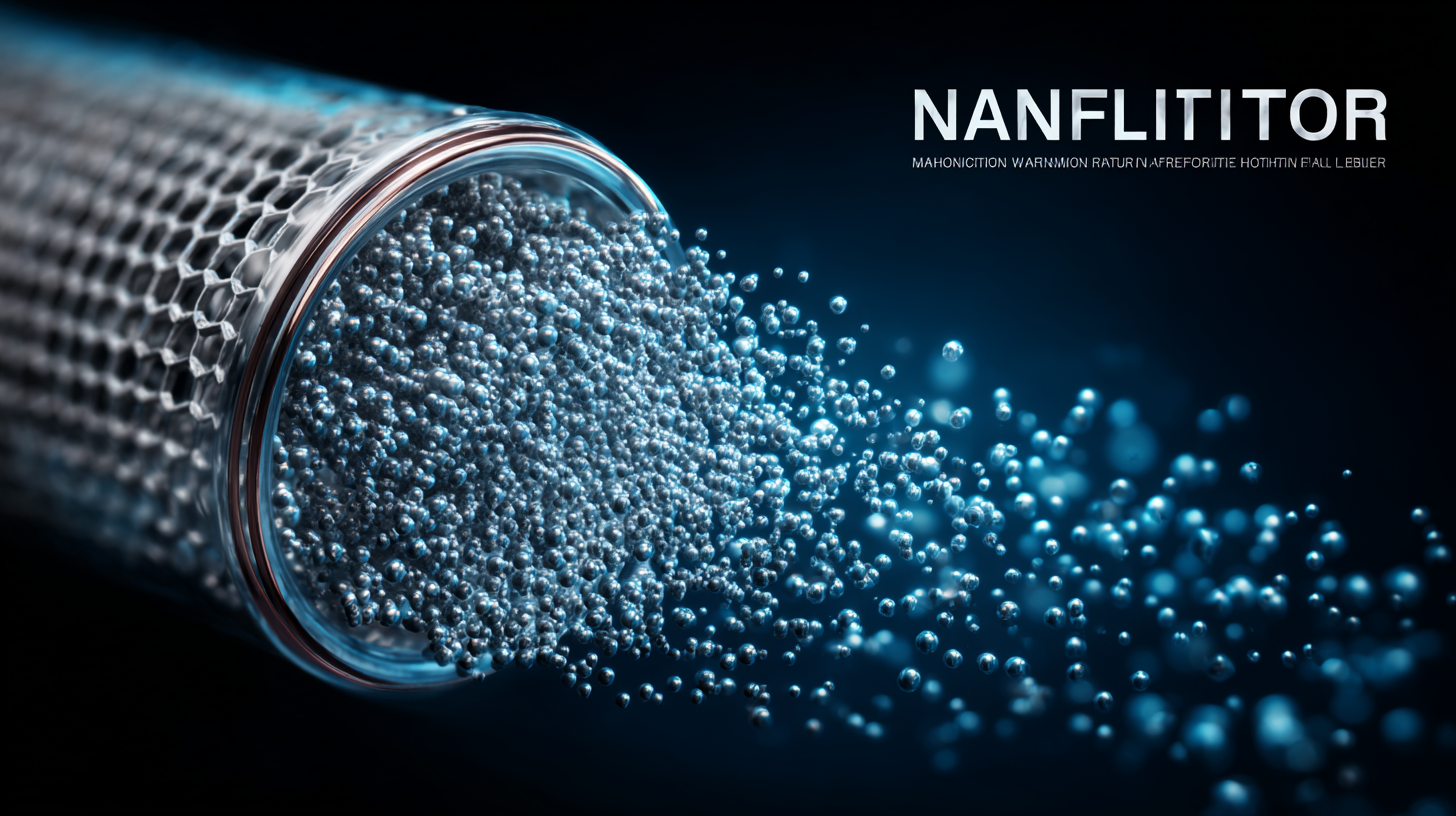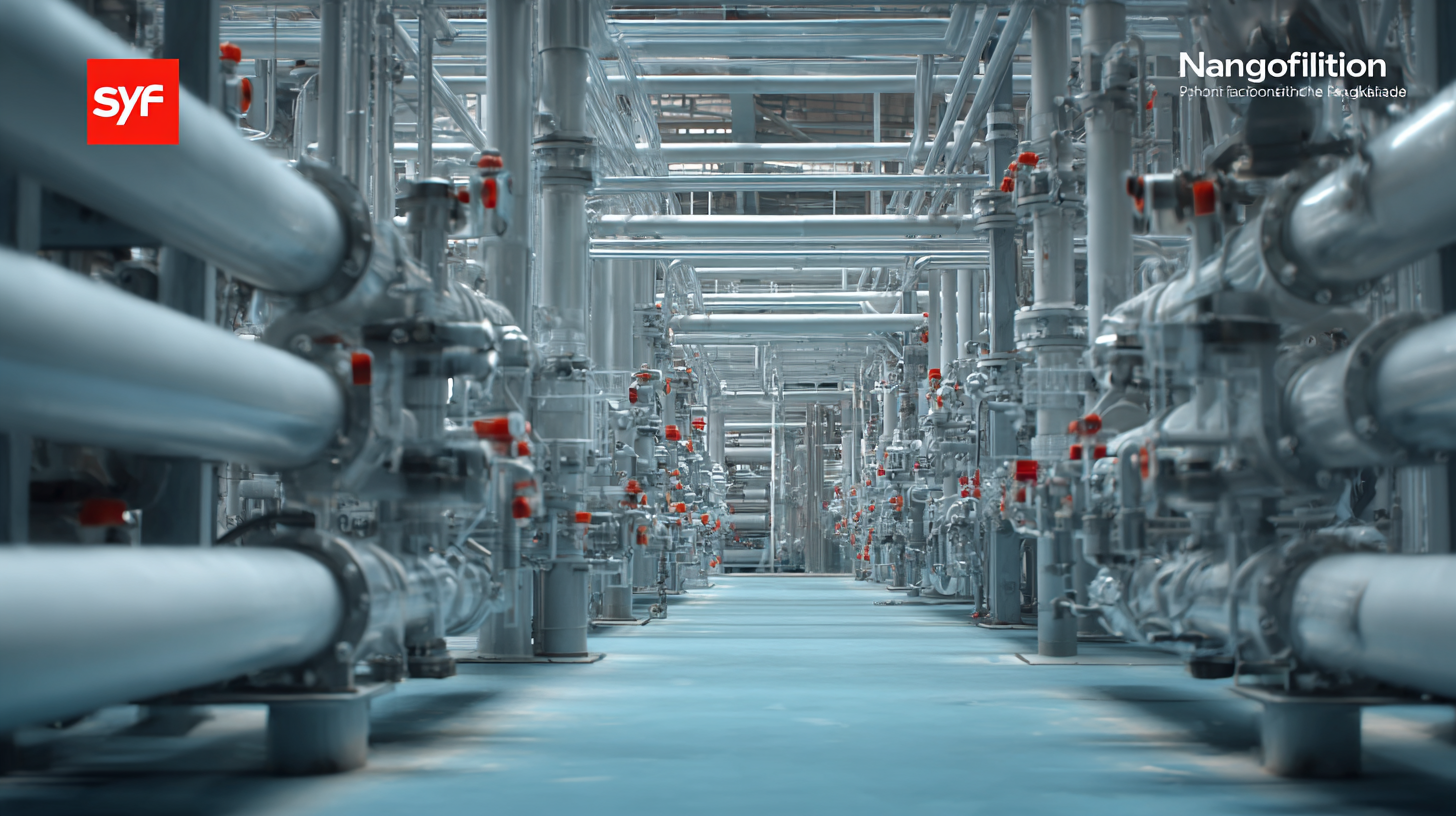Leave Your Message
Request a Quote
In recent years, China's manufacturing sector has undergone a remarkable transformation, positioning the nation as a global leader in various high-tech industries. Among these advancements, the development of the Nanofiltration Filter has emerged as a cornerstone of China's export strategy, allowing for enhanced water treatment processes crucial for a sustainable future.

According to a report by MarketsandMarkets, the global nanofiltration market is projected to reach $9.8 billion by 2025, growing at a CAGR of 8.5% from 2020. This significant growth underscores the increasing demand for efficient filtration solutions across various sectors, including food and beverage, pharmaceuticals, and water treatment.
China's ability to produce top-tier Nanofiltration Filters not only meets domestic needs but also strengthens its foothold in the international market, where the focus on water quality and sustainability continues to rise.
China's nanofiltration technology is experiencing a remarkable transformation, positioning the country as a pivotal player in the global market. According to a recent report by MarketsandMarkets, the nanofiltration membrane market is expected to reach USD 4.59 billion by 2025, growing at a CAGR of 12.5%. This underscores the escalating demand for advanced filtration solutions across various sectors, including water treatment, food processing, and pharmaceuticals. China's robust manufacturing capabilities, combined with innovative research and development, have propelled their nanofiltration filters to the forefront of the industry, setting new benchmarks in efficiency and sustainability.
As companies in China adopt cutting-edge techniques, trends such as the integration of AI technology for real-time monitoring and data analysis have emerged. These innovations not only enhance filtration performance but also optimize operational costs. Furthermore, the shift towards eco-friendly materials and processes reflects a growing awareness of environmental sustainability within the industry.
Tips: When considering nanofiltration solutions, prioritize filters that offer both high performance and low energy consumption to maximize efficiency. Additionally, staying abreast of industry trends can provide insights into potential technological advancements and regulatory changes that may impact your business operations. Embracing a proactive approach will ensure you leverage the best filtration technologies available.
Nanofiltration filters are rapidly gaining attention in various industries, owing to their unique ability to separate molecules based on size and charge. Notably, these filters are essential in water treatment processes, where they effectively remove contaminants and impurities while allowing essential minerals to pass through. This makes them invaluable not only for municipal water supplies but also for industries requiring high-purity water, such as pharmaceuticals and food processing.
In the energy sector, nanofiltration is being utilized for desalination and wastewater treatment, offering an eco-friendly solution that ensures compliance with stringent environmental regulations. Furthermore, the agricultural industry leverages these filters for irrigation water treatment, helping to optimize water usage and enhance crop yield. As the global market increasingly acknowledges the importance of sustainable practices, the versatility and efficiency of nanofiltration filters position them as a fundamental tool in achieving these goals across multiple sectors.

The rise of nanofiltration technology in China's manufacturing sector is a testament to the country's relentless pursuit of efficiency and quality. However, manufacturers face several challenges when implementing these advanced systems. According to a recent report by MarketsandMarkets, the global nanofiltration membrane market is expected to reach USD 7.2 billion by 2026, growing at a CAGR of 9.5%. This rapid growth underscores the increasing demand for efficient filtration solutions. Nevertheless, manufacturers must navigate complexities such as high material costs and the intricacies of system integration, which can impede productivity.

Moreover, the lack of standardized testing methods and varying regulatory frameworks across regions add another layer of difficulty for manufacturers. A study from Grand View Research highlights that only about 30% of manufacturers have adopted optimal nanofiltration systems, primarily due to these compliance and technology hurdles. Overcoming these challenges is essential for companies aiming to capitalize on the booming demand for nanofiltration solutions in sectors such as water treatment, food processing, and pharmaceuticals. As innovations continue to emerge, it's crucial for manufacturers to adapt quickly to maintain their competitive edge in the global market.
China's nanofiltration filters have made significant strides in global markets, outperforming traditional rivals in various performance metrics. When analyzing filtration efficiency, China’s manufacturers have leveraged advanced materials and innovative design techniques to create filters that reduce contaminants with remarkable precision. For instance, numerous studies indicate that these filters can achieve a rejection rate of over 90% for common impurities, setting a new benchmark in the industry.
Additionally, the durability and operational cost of Chinese filters present significant advantages. Unlike many competitors, Chinese firms prioritize sustainability, resulting in filters that not only last longer but also require less energy and fewer resources to maintain. This focus on efficiency translates into lower long-term costs for consumers, enhancing the attractiveness of their products in a market that increasingly values eco-friendly solutions. As the global demand for water purification and other filtration applications rises, China’s position as a market leader in nanofiltration technology appears increasingly secure.
| Filter Type | Membrane Material | Flux Rate (LMH) | Rejection Rate (%) | Operating Pressure (bar) | Lifespan (Years) |
|---|---|---|---|---|---|
| Nanofiltration A | Polyamide | 45 | 90 | 10 | 5 |
| Nanofiltration B | Polyethersulfone | 55 | 85 | 12 | 6 |
| Nanofiltration C | Composite | 50 | 88 | 11 | 7 |
| Nanofiltration D | PVC | 40 | 80 | 9 | 4 |
In recent years, China's manufacturing sector has undergone a significant transformation, primarily driven by innovations in nanofiltration technology. Chinese manufacturers are not just improving output; they are redefining efficiency and sustainability through advanced filtration solutions that address both industrial and environmental challenges. This surge in innovation has positioned China as a global leader in the nanofiltration market, showcasing their commitment to minimizing waste and enhancing water purification processes.
One of the pivotal advancements in nanofiltration is the development of membranes that exhibit higher permeability and selectivity. These membranes allow for the efficient removal of contaminants while preserving essential minerals, making them ideal for various applications, from water treatment to food processing. By continuously investing in research and development, Chinese companies are setting new standards for performance and reliability in filtration technology.
**Tip:** When considering the integration of nanofiltration in your operations, focus on identifying the specific contaminants you need to address. This will enable you to select the most suitable membrane technology for your unique requirements.
Furthermore, staying updated on the latest developments in nanofiltration materials can yield significant performance enhancements. Emerging materials such as graphene and advanced polymer composites are paving the way for improved durability and efficiency.
**Tip:** Regularly attend industry conferences and workshops to network with experts and discover cutting-edge technologies that can elevate your filtration processes.

